Plains
A plain is a broad area of relatively flat land that is generally lower than the surrounding areas, such as hills or mountains. Plains are found on every continent and make up a significant portion of the Earth's land surface. They are important geographical features that have a variety of ecological, agricultural, and geological significance.
Types of Plains
There are several types of plains, including:
- Coastal Plains: These are flat areas along the coast that are formed by the deposition of sediments by rivers and the action of waves and currents.
- Interior Plains: These are expansive areas of flat land located away from the coast and are often characterized by fertile soil and suitable for agriculture.
- Floodplains: These plains are formed by the deposition of sediments during periodic flooding of rivers. They are often very fertile and used for agricultural purposes.
- Glacial Plains: These plains are formed by the movement and deposition of glacial ice, leaving behind flat landscapes.
Formation of Plains
Plains are formed through various geological processes, including:
- Erosion and Deposition: The action of water, wind, and ice can erode and carry sediments, which are then deposited in low-lying areas, creating flat plains.
- Tectonic Activity: The movement of tectonic plates can create uplift and subsidence, leading to the formation of plains over time.
- Glacial Activity: The movement of glaciers can carve out and flatten landscapes, forming glacial plains.
Importance of Plains
Plains have significant ecological, agricultural, and geological importance, including:
- Agricultural Productivity: Plains often have fertile soil and are suitable for agriculture, making them important for food production.
- Ecological Diversity: Plains support a variety of plant and animal life, and many species depend on plains for their habitats.
- Transportation and Settlement: The flat terrain of plains makes them suitable for transportation and human settlement, leading to the development of cities and infrastructure.
- Geological Resources: Plains may contain valuable mineral and energy resources that are important for economic development.
Study Guide
To study the topic of plains, consider the following key points:
- Learn about the different types of plains and their characteristics.
- Understand the geological processes involved in the formation of plains, such as erosion, deposition, and tectonic activity.
- Explore the ecological significance of plains and their role in supporting biodiversity.
- Examine the importance of plains for agriculture and food production.
- Consider the impact of human activities on plains and the need for sustainable management of these important landscapes.
[Plains] Related Worksheets and Study Guides:
.◂Science Worksheets and Study Guides Seventh Grade. Earthquakes
Study Guide Earthquakes
Earthquakes  Activity Lesson
Activity Lesson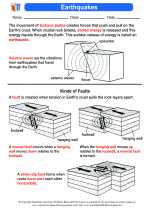 Earthquakes
Earthquakes  Worksheet/Answer key
Worksheet/Answer key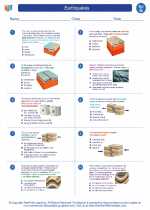 Earthquakes
Earthquakes  Worksheet/Answer key
Worksheet/Answer key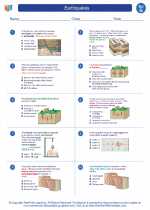 Earthquakes
Earthquakes  Worksheet/Answer key
Worksheet/Answer key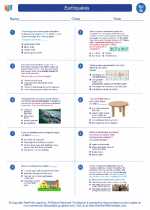 Earthquakes
Earthquakes  Worksheet/Answer key
Worksheet/Answer key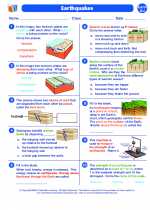 Earthquakes
Earthquakes  Worksheet/Answer key
Worksheet/Answer key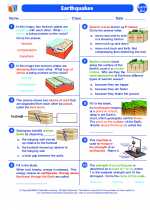 Earthquakes
Earthquakes  Vocabulary/Answer key
Vocabulary/Answer key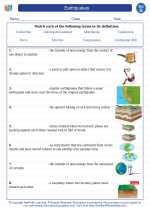 Earthquakes
Earthquakes  Vocabulary/Answer key
Vocabulary/Answer key Earthquakes
Earthquakes  Vocabulary/Answer key
Vocabulary/Answer key Earthquakes
Earthquakes  Vocabulary/Answer key
Vocabulary/Answer key Earthquakes
Earthquakes  Vocabulary/Answer key
Vocabulary/Answer key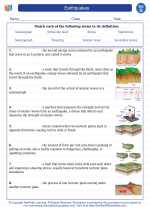 Earthquakes
Earthquakes  Vocabulary/Answer key
Vocabulary/Answer key Earthquakes
Earthquakes  Vocabulary/Answer key
Vocabulary/Answer key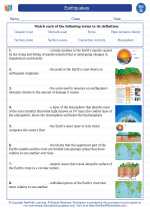 Earthquakes
Earthquakes 

 Activity Lesson
Activity Lesson
 Worksheet/Answer key
Worksheet/Answer key
 Worksheet/Answer key
Worksheet/Answer key
 Worksheet/Answer key
Worksheet/Answer key
 Worksheet/Answer key
Worksheet/Answer key
 Worksheet/Answer key
Worksheet/Answer key
 Vocabulary/Answer key
Vocabulary/Answer key
 Vocabulary/Answer key
Vocabulary/Answer key
 Vocabulary/Answer key
Vocabulary/Answer key
 Vocabulary/Answer key
Vocabulary/Answer key
 Vocabulary/Answer key
Vocabulary/Answer key
 Vocabulary/Answer key
Vocabulary/Answer key
 Vocabulary/Answer key
Vocabulary/Answer key
